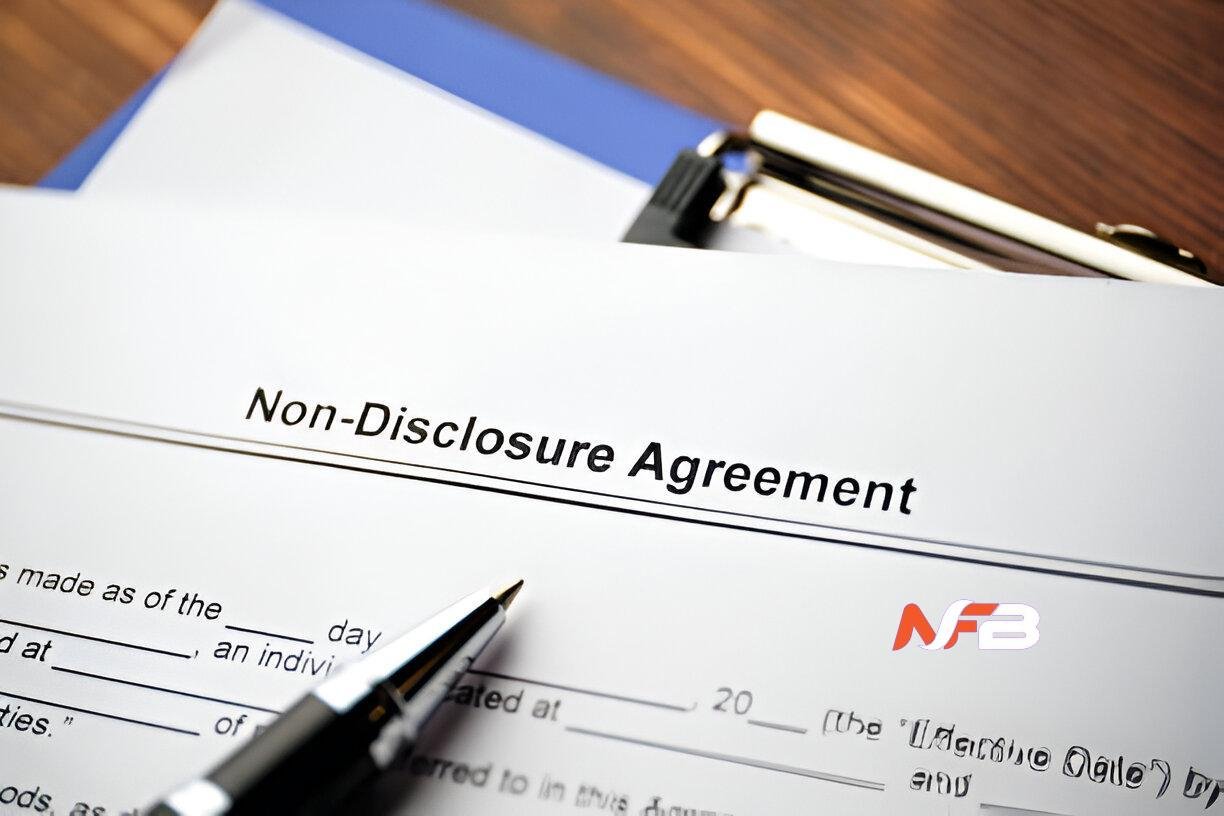Introduction
A Non-Disclosure Agreement (NDA) is a legally binding contract that establishes a confidential relationship between parties, often to protect sensitive information. Sometimes referred to as confidentiality agreements, NDAs ensure that specific data remains undisclosed beyond the agreed terms. The significance of reviewing an NDA lies in safeguarding proprietary information and preventing potential legal disputes.
Why Review an NDA?
- Protection of Sensitive Information: Confirm that your confidential data is adequately shielded.
- Legal Compliance: Avoid misunderstandings that could lead to costly legal issues.
This article delves into the essentials of conducting an effective NDA review. You will learn about key components, the importance of thorough examination before signing, and tools like Chamelio.ai that simplify this process. By understanding these elements, you can navigate NDAs with confidence and clarity.
Understanding Non-Disclosure Agreements
Legal Definition and Purpose of NDAs
Non-Disclosure Agreements (NDAs) are legally binding contracts designed to establish a confidential relationship between parties. Their primary purpose is to protect sensitive information from unauthorized disclosure, thereby safeguarding business interests and fostering trust. NDAs play a crucial role in various business contexts such as negotiations, partnerships, and employment.
Types of NDAs: Unilateral vs. Mutual
NDAs can be categorized into two main types:
- Unilateral NDA: In this type, only one party discloses confidential information while the other party commits to maintaining its confidentiality. Commonly used when a company shares proprietary information with employees or contractors.
- Mutual NDA: Both parties share confidential information with each other and agree to protect it. This is often applicable in joint ventures or collaborations where both sides need to exchange sensitive data.
Understanding these components of a non-disclosure agreement helps ensure the correct type is employed in appropriate situations, thus enhancing legal protection and operational efficiency.
Key Components of an NDA You Should Know About
When diving into the details of a Non-Disclosure Agreement, several critical components demand your attention:
- Identification of Parties Involved: Clearly outline all parties who are entering into the agreement. This ensures there is no ambiguity regarding who is bound by the terms.
- Definitions of Confidential Information: Precisely define what constitutes confidential information. This can vary significantly depending on the nature of the business relationship and should be tailored to include all sensitive data that needs protection.
- Handling Rules for Disclosed Information: Establish explicit rules on how the disclosed information should be handled. This may include storage, access, and permissible uses to maintain confidentiality obligations.
- Legal Obligations for Both Parties: Each party’s responsibilities must be detailed. These could involve safeguarding data or restrictions on sharing information with third parties without consent.
- Remedies for Unauthorized Disclosure: Outlining potential remedies provides a course of action in case of a breach. This might include indemnity clauses or financial penalties to enforce compliance.
- Terms Regarding Duration and Return or Destruction of Information: The agreement should specify how long the confidentiality obligation lasts. Additionally, it should address what happens to confidential information at the end of this period—whether it’s returned, destroyed, or both.
Incorporating these elements is crucial to ensure that an NDA effectively protects sensitive information while outlining clear expectations and consequences for all parties involved.
The Importance of Reviewing an NDA Thoroughly Before Signing It
Before you sign any Non-Disclosure Agreement (NDA), it is crucial to conduct a thorough review. This process is essential to ensuring the protection of sensitive information. NDAs are designed to safeguard confidential data, but if not carefully examined, they can become a source of potential legal issues.
Key reasons to review an NDA include:
- Avoiding Ambiguity in Language: Vague wording can create loopholes that may be exploited, leading to unintended disclosures. Precise language helps prevent misunderstandings and disputes.
- Identifying Overly Broad Clauses: Clauses that are too expansive might hinder enforcement and make the agreement difficult to uphold in legal settings. Narrowing these clauses ensures the NDA remains enforceable and relevant.
- Protecting Against Legal Liabilities: A comprehensive review minimizes the risk of signing an agreement that could expose your organization to legal liabilities due to unclear or unfair terms.
Engaging in a detailed examination allows you to identify and address any issues upfront, providing peace of mind that your interests are protected. Reviewing an NDA thoroughly is not just a formality; it’s a critical step in managing business relationships effectively.
Steps for Reviewing an NDA Effectively with Chamelio.ai
Having a systematic approach can make a significant difference when it comes to understanding how to review an NDA. Here’s a step-by-step guide to help you review an NDA effectively:
Step 1: Gather Necessary Documents and Context
Start by gathering all necessary documents and context regarding the agreement. This includes any prior communications or related contracts that might influence the terms of the NDA.
Step 2: Analyze Key Components
Next, dive into analyzing key components of the NDA:
- Identification of Parties: Ensure all involved parties are correctly identified.
- Definition of Confidential Information: Check if the definition is clear and precise, avoiding ambiguities.
- Handling Rules: Review how confidential information should be managed.
- Obligations and Consequences: Look at the duties of each party and what happens in case of a breach.
- Duration and Termination: Consider the terms regarding how long the NDA lasts and what happens to information at its conclusion.
Step 3: Identify Potential Risks and Ambiguities
Identifying potential risks and ambiguities is crucial. For instance, areas with overly broad language or unclear definitions may pose legal challenges down the line.
Step 4: Leverage AI Contract Review Software
Leveraging AI contract review software like Chamelio.ai can streamline this process significantly. Its advanced algorithms help detect inconsistencies, highlight key clauses, and suggest improvements, effectively acting as your NDA checklist. This not only saves time but also enhances accuracy, enabling a thorough review without missing critical details.
Best Practices for Conducting Successful NDA Reviews with Legal Experts’ Assistance
Navigating the intricacies of Non-Disclosure Agreements can be daunting, yet establishing a systematic approach within your organization can streamline the process. Here are some practice tips for NDAs:
1. Create a Checklist
Develop a detailed checklist that outlines all key components necessary for reviewing NDAs. Ensure it includes sections such as identification of parties, definitions of confidential information, and rules for handling disclosed data.
2. Standardize Procedures
Implement standardized procedures for NDA reviews to maintain consistency across all agreements. This can include templates or guidelines that address common clauses and stipulations specific to your industry.
Consultation with legal professionals is invaluable. Experts from organizations like the American Bar Association or specialized firms such as Woods & Aitken LLP offer insights that go beyond basic compliance. Their expertise helps identify subtle risks and ensures that the language aligns with current legal standards, reducing potential legal disputes.
Engage these professionals early in the review process to benefit from their experience and understanding of complex legal frameworks. This collaborative approach not only secures confidential information but also strengthens business relationships by ensuring mutual trust and transparency.
Comparing NDAs and Non-Compete Agreements: Understanding Their Differences in Protecting Your Business Interests
When you compare NDAs and non-compete agreements, it’s crucial to recognize their distinct purposes.
- NDAs (Non-Disclosure Agreements) focus on maintaining the confidentiality of sensitive information exchanged between parties. They are typically employed in situations involving trade secrets, proprietary data, or strategic plans.
- Non-Compete Agreements restrict an individual or entity from engaging in competing businesses within a specified period and geographic area. These are often used during employment contracts to prevent former employees from directly competing or poaching clients.
Each legal tool plays a vital role in safeguarding business interests under varying circumstances.
Conclusion
Using tools like Chamelio.ai can change the way you handle and examine a Non-Disclosure Agreement (NDA). With the help of AI-powered solutions, you can make the review process easier, spot potential risks, and make sure sensitive information is well protected. It’s important to manage NDAs effectively to protect your business interests and keep strong confidentiality agreements in place.
When NDAs are violated, it’s crucial to find solutions. Advanced software can help not only in identifying breaches but also in taking preventive actions. This proactive strategy improves your ability to maintain trust and security among partners and stakeholders.
Think about how important it is to have a systematic approach when reviewing an NDA. Working with legal experts and using technological tools together adds an extra level of confidence that every clause is carefully examined. This combined strategy ensures that your agreements are both enforceable and protective of your business’s most valuable assets.
By following these methods, you prepare your organization to handle confidential information responsibly while encouraging innovation and collaboration.











Leave a Reply